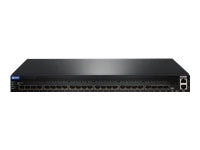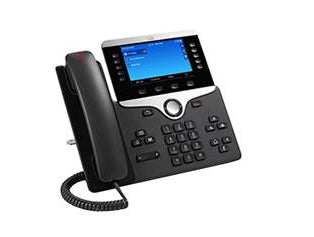Product Description
OC-192 XFP-based multiple-reach optics card, 1 ckt., SONET systems
The Cisco® ONS 15454 OC-192/STM-64 10-Gigabit Small Form-Factor Pluggable-Based (XFP-Based) Optics Card improves the system flexibility for the Cisco ONS 15454 Multiservice Provisioning Platform (MSPP) and lowers the cost of sparing 10-Gbps interfaces.
Product Overview
The Cisco ONS 15454 OC-192/STM-64 XFP-Based Optics Card provides a single XFP-based pluggable optics module. The multiple-rate optics card operates in either Cisco ONS 15454 SONET or SDH systems, providing multiple-reach capabilities including short-reach/inter-office (SR/IO), intermediate-reach/short-haul (IR/SH), and long-reach/long-haul (LR/LH). Additionally, the SR/IO-only card provides a cost-effective, fixed SR/IO configuration to support first cost-sensitive installations where flexibility is not paramount.
The OC-192/STM-64 XFP card can carry concatenated payloads of STS-3c/VC-4, STS-6c/VC-4-2c, STS-12c/VC-4-4c, STS-24c/VC-4-8c, and STS-48c/VC-4-16c, as well as nonconcatenated payloads on an STS-1, VC-4, VC-3, VC-12, VC-11, and VT1.5 basis. In SONET applications, the card is software-provisionable to transport SDH payloads over SONET in the form of STS-Nc-concatenated payloads. When operated within the outlined specifications (Table 4), each card will transport the 10-Gbps signal with a maximum bite error rate (BER) of 10E-12.
The card is deployable in the four high-speed interface card slots (5, 6, 12, and 13) of the Cisco ONS 15454 MSPP. The card's port can be commissioned for use in unidirectional-path switched ring/subnetwork connection protection (UPSR/SNCP), 2-fiber and 4-fiber bidirectional line switched ring/multiplex section-shared protection ring (BLSR/MS-SPR), 1+1 automatic protection switching/line multiplex section protection (APS/LMSP), or path-protected mesh network (PPMN) architectures, providing the flexibility to build the type of networks required to meet service demands, traffic patterns, and user needs. This card-provisioning flexibility also helps reduce the cost of inventory and simplifies engineering and deployment.
The OC-192/STM-64 XFP card supports in-service bandwidth upgrade capabilities from lower-speed cards including the single-port OC-12/STM-4, OC-48/STM-16, and OC-192/STM-64 cards, using the Cisco Transport Controller's simple span-upgrade wizard.
The OC-192/STM-64 XFP card incorporates faceplate-mounted LEDs to provide a quick visual check of the operational status at the card as well as the interface port. The LEDs will be exercised during a user-requested lamp test operation. The fan-tray-mounted liquid crystal display (LCD) and soft keys provide the technician local access to the port status of the optical port without the need to access the craft manager. Printed on the faceplate is a blue triangle icon, which indicates the shelf slot where the card can be physically installed.
The card is supported by the integrated Cisco Transport Controller craft manager for the Cisco ONS 15454 MSPP. The controller provides the user with access to operations, administration, maintenance, and provisioning (OAM&P) for the system. Access to inventory data for the installed OC-192/STM-64 XFP card and XFP are available through the craft manager, Cisco Transport Manager element management system, and through TL1 requests.
The XFP modules used with the OC-192/STM-64 XFP card are SONET/SDH-compliant optical interfaces. The transmitter and receiver reside on the same module and are interconnected to the fiber using small form-factor LC connectors. The XFP optics in the OC-192/STM-64 XFP card support a provisionable automatic laser shutdown feature (ITU G.664) to turn off the transmitting laser in the event of a fiber failure on the span. The XFP optical parameters, including laser bias current, optical transmit power, and optical receive power will be available through Cisco Transport Controller and TL1 to enable simplified troubleshooting and advanced warning of potential impending issues, using user-configurable high and low threshold crossing alerts (TCAs). The XFP cage is angled down relative to the faceplate to reduce bend-induced stresses on the optical fibers attached to the XFP.
| Features |
|---|
| Certification |
ETSI 300-386-TCNEBS Telcordia Technologies GR-1089-CORE, Issue 3 (Level 3, Type 2 and Type 4)IEC CISPR 22, CISPR 24ICES-003, Issue 3, 1997FCC 47CFR15EU EN55024, EN55022EN6100-6-1CSA CAN/CSA-C22.2 No. 950-95, 3rd EditionNEBS Telcordia Technologies GR-1089-CORE, Issue 3, (Level 3, Type 2 and Type 4)IEC 60950-1 / EN 60950-1, 1st editionUL and cUL / CSA 60950-1, 1st editionUL / CSA 60950-1 or IEC 60950-1 / EN60950-121CFR1040EN or IEC 60825-1EN or IEC 60825-2 |
| Ventilation type |
Passive |
| Number of service slots |
1 |
| Standard interfaces |
XFP |
| Product type |
MSPP |
| Performance |
|---|
| Data transfer rate per channel (max) |
10 Gbit/s |
| Dense Wavelength Division Multiplexing (DWDM) range |
1310 - 1550 nm |
| Coarse Wavelength Division Multiplexing (CWDM) range |
1310 - 1550 nm |
| Power |
|---|
| Power consumption (typical) |
40 W |
| Weight & dimensions |
|---|
| Weight |
810 g |
| Operational conditions |
|---|
| Operating temperature (T-T) |
-5 - 55 °C |








 800.961.3094
800.961.3094 4300 Highlands Pkwy SE, Suite C
4300 Highlands Pkwy SE, Suite C 